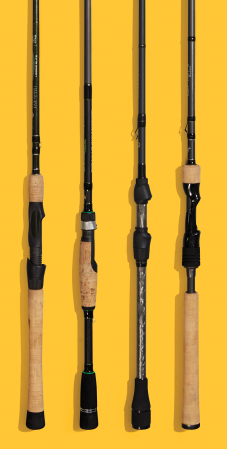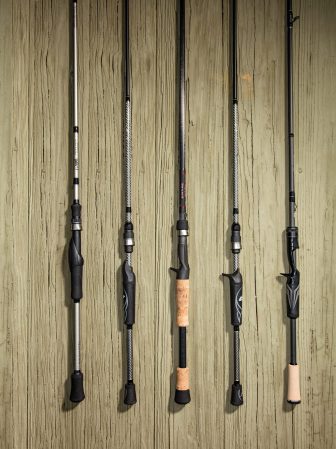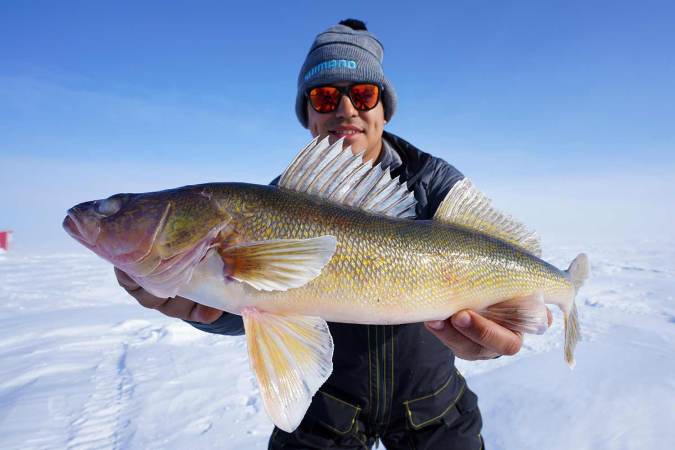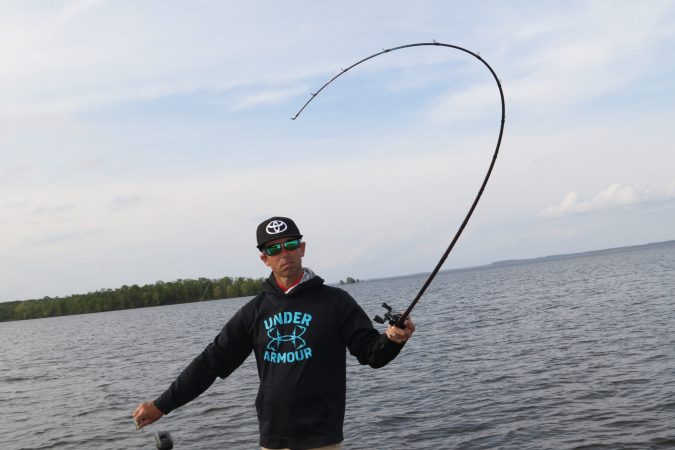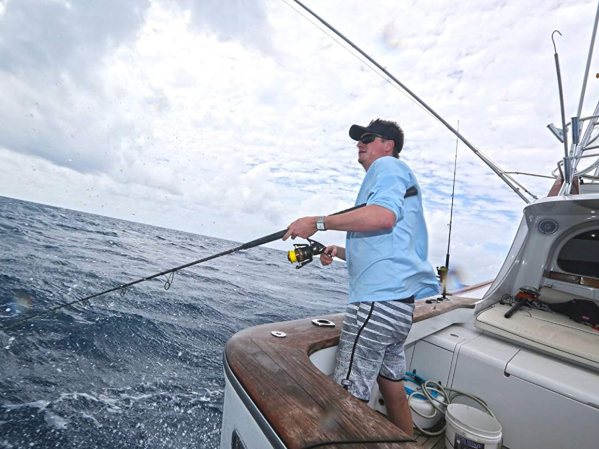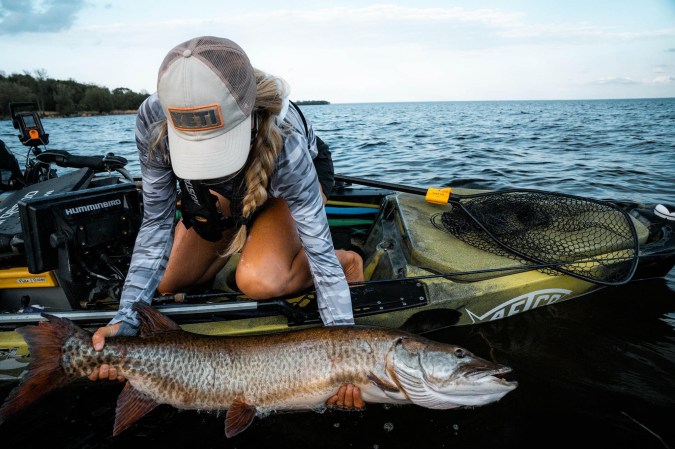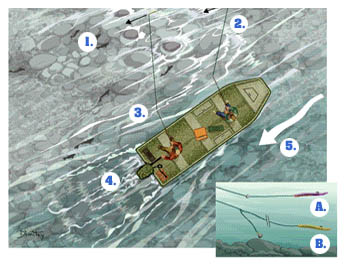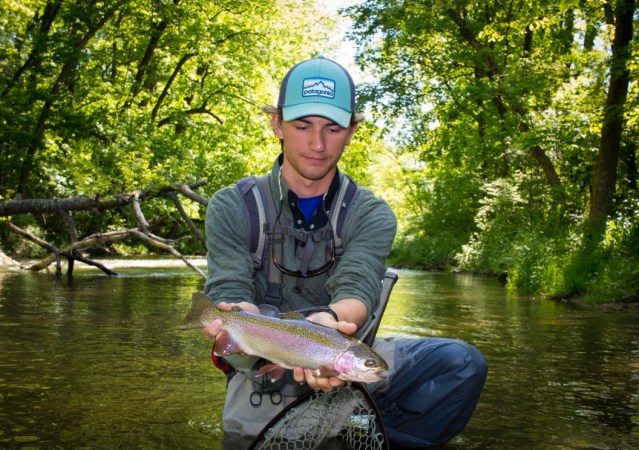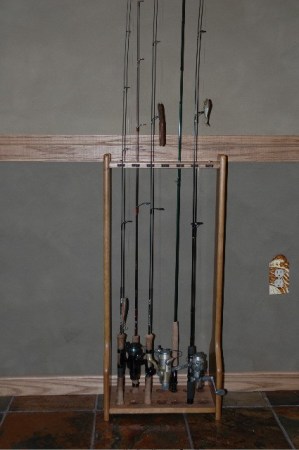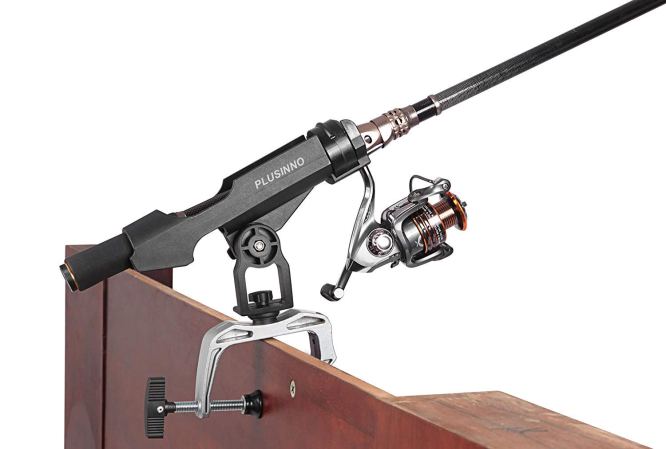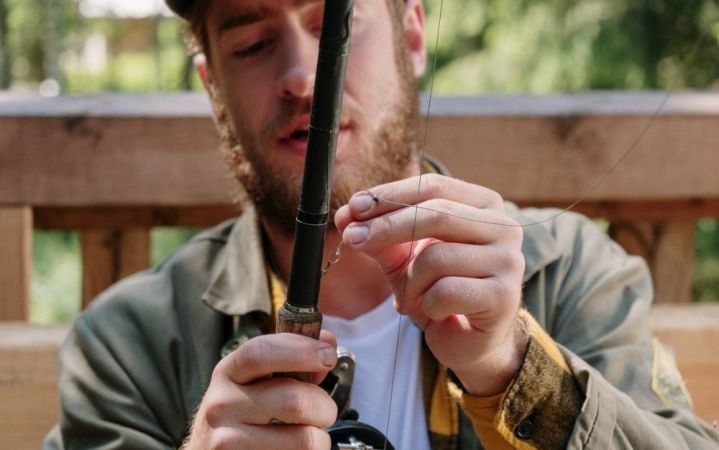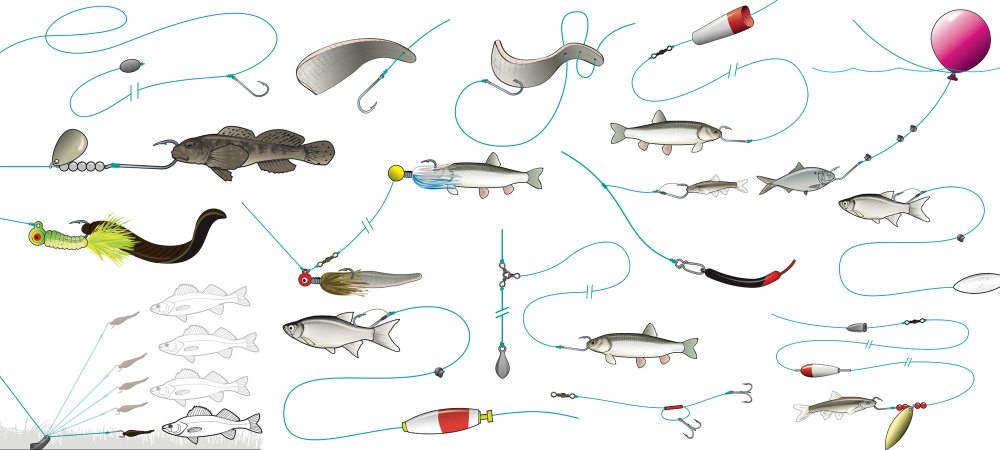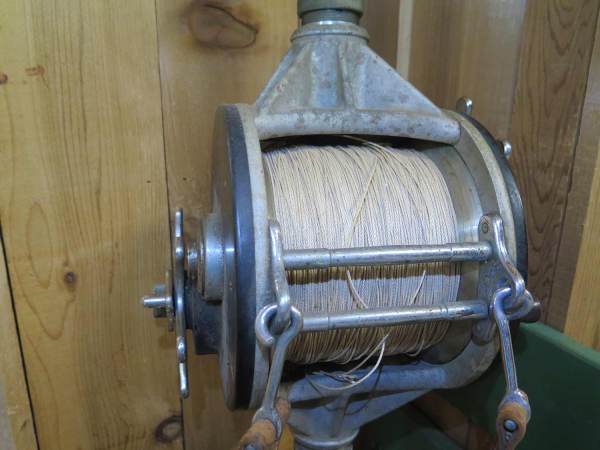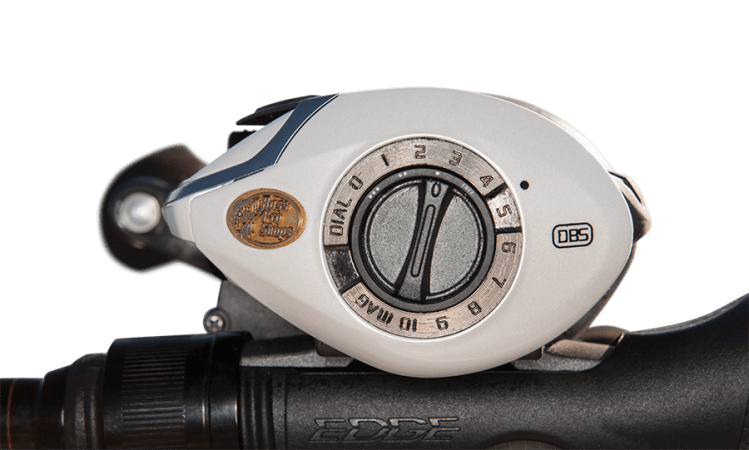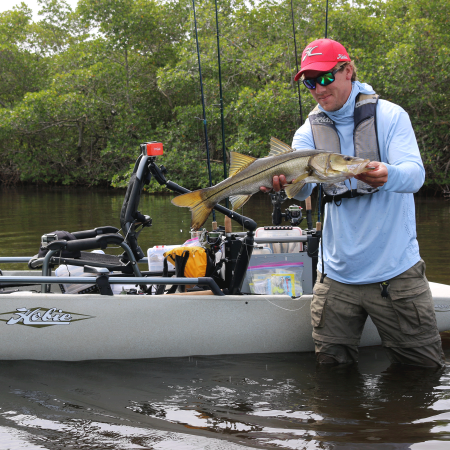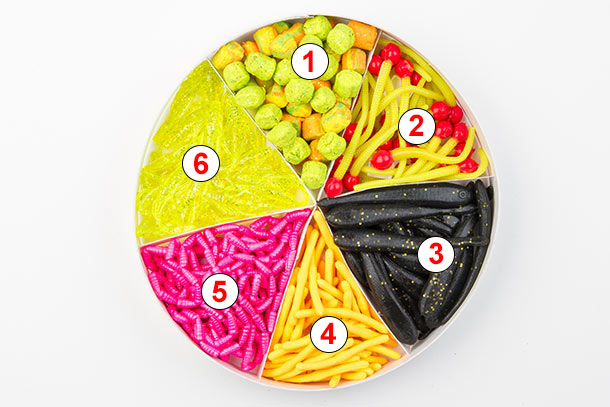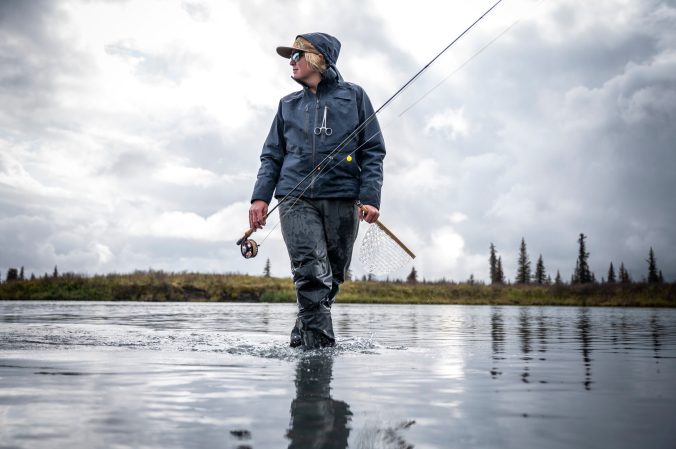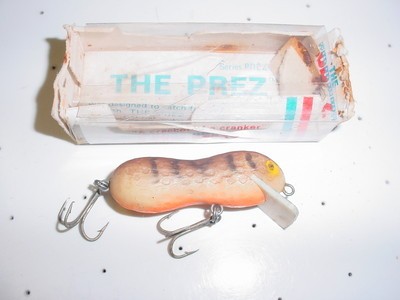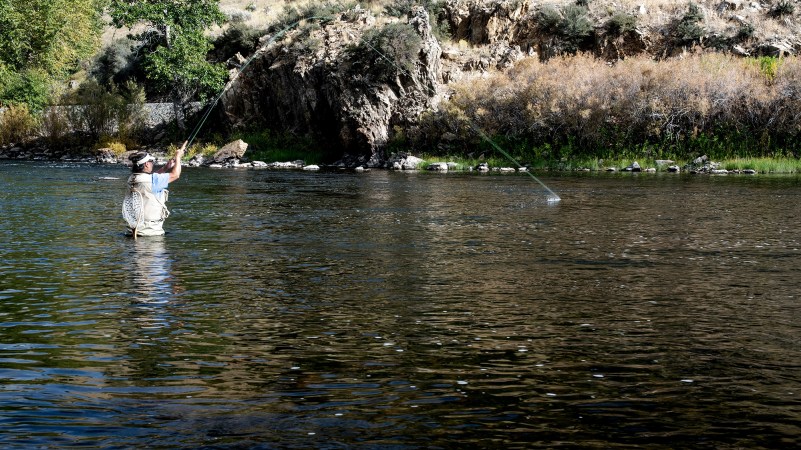We may earn revenue from the products available on this page and participate in affiliate programs. Learn More ›
This is gettingweird, I told myself. Here I am fishing with some of the newest and nicestniche rods for salmon and steelhead along the Oregon coast, and I’m starting tothink about walleyes, stripers and catfish.
Actually, suchthoughts aren’t so odd. The more you chase different sorts of fish in differenttypes of water, the more you realize that many of the proven fishing techniquesrely on rods designed to do very similar things. To perform those functionssuccessfully, the rods must incorporate certain tapers, specific materials,guide types and length ranges.
Typically, whenwe pick up a rod we wave it a little, then maybe lower the tip against acarpeted floor and apply pressure to see how the blank bends. Yet this standardexercise really tells us very little. Better to have the rod rigged and havesomeone tightly hold the line some distance from the tip as you raise the rodand watch and feel what happens. You’ll see how quickly and easily the tipsection bends. You’ll judge just where the blank “locks up”–rodspeakfor the point at which hook-setting power first comes on line. You’ll be ableto determine whether the rod’s real power begins somewhere in the midsection,or whether there’s a parabolic bending (signifying a gradual power increase)all the way into the handle. You’ll judge the rod’s perceived weight and then,given the blank and handle length, you’ll begin considering how and where therod might fit into the various types of fishing you do.
That was exactlywhat ran through my mind recently during several days of fishing in thebountiful coastal waters near Tillamook, Ore., with top guides Doug Wilhite,Tim Juarez and Terry Mulkey. The trio was instrumental in designing a new14-model salmon/steelhead rod series for G.Loomis. Good timing, because thisseems to be the year for new salmon/steelhead rods. Besides G.Loomis, a numberof companies have added models or launched entire series in this category (seesidebar).
How do lake orsea-run salmon/steelhead rods relate to other fishing? Consider the followingcommon techniques and the rods built to match them.
MOOCHING RODS
In the salmongame, mooching means molasses-slow trolling or controlled drifting using a rigthat consists of a lead ball weight of ½ ounce to 8 ounces and a naturalherring bait, its head cut off behind the gills on a 45-degree angle,tandem-hooked and streamed from a 6- to 8-foot leader. The bait must spinslowly, and two chaintype swivels are frequently used–one to attach the leaderto the main line, another amidships in the leader. (Anglers who normally usethree-way swivels in various sinker/bait terminal rigs should consider thedual-chain swivel approach, which makes it less likely that rigs will foul asthey pass through algae or other vegetation.)
G.Loomis moochingrods come in lengths from 8½ feet to 12 feet 3 inches. Place the longer rods inthe bow, and set up the shorter rods in the stern to spread the trolled lines.These rods have “moderate” actions, bending slowly down into the corkgrips. The idea is to leave the rods in their holders when a fish bites,watching until the rod bends over and stays there before removing it from theholder. In this trolling game, there are a lot of near misses. At times thefish will strike the bait without connecting; the rod might pull and let goseveral times. “Sometimes you’ll get what we call a ‘dogbone bite,'”says Mulkey. “The fish takes the bait lightly in its mouth and runs awaywith it like a dog moving off with its bone. The rod might stay down and youthink you have a fish on, but often you don’t.” In fact, if you’re holdingthe rod and react instantly, you’ll likely miss such fish. With a stiffer rod,you’ll almost certainly come up empty.
The G.Loomismooching rod is similar to the rods with slower action that are favored by bassfishermen using crankbaits. This sort of softer action is also popular withthose who troll side-planer boards, Dipsy Divers or Jet Divers for walleyes.It’s an action that would be at home probing the deeper ledges in reservoirs orbig rivers for bodacious jumbo catfish. Consider, too, slow-trolling forstripers or inshore saltwater species.
Once you have abig fish on a mooching rod and the blank is fully engaged, you can applyterrific lifting power. I was able to skid 20-pound-plus king salmon across thesurface and hold them there for netting.
SPINNER RODS
Fitted withquality levelwind reels, these babies are perfect for trolling in-line spinnersin bays and estuaries, rather than big open offshore water. Designed to be heldby an angler all day, the rods are incredibly light with extra-fast tips. Theymust detect the subtlest of bites–those slack-line takes where the onlyindication of a strike is when the blade vibrations simply pause a splitsecond.
If you don’t feelthat pause and don’t set the hook immediately, you lose. Gary Schaefer,G.Loomis’s marketing guru, demonstrated another spinner take–the “pluckbite”.on me by picking the fabric of my shirt sleeve so lightly that Icould barely feel it. Nickeltitanium Recoil guides complement the spinner rods’light, strong GLX material. The combination makes possible the use of smallspinner blades–important in clear water for finicky fish. Trout anglers fishinglakes and reservoirs or walleye anglers trolling their own style of bait orspinner rigs know the importance of reduced blade size during tough conditions.They, too, can benefit from rods with overall light weight, sensitive tips andhigh-end guides.
BACKBOUNCERODS
Backbouncinginvolves holding the boat in current either with motor control or at anchor andslowly feeling–bouncing–the bait to you. It’s vital that you feel the sinkerhitting bottom as the bait streams down-current, and just as important that youdon’t strike hard and fast during a typical halfhearted, mouthing take by afish. The ideal rod for this technique has a moderately fast tip similar tothat of a mooching rod, and progressive bending action down the blank. Thebackbounce rod need not be as long as a mooching rod, however. You don’t haveto spread as many lines as you do in steady mooch trolling. The technique isidentical to what catfish anglers call “walking a bait” down-currentinto holes and short drop-offs behind bottom rises. Nor is the technique farremoved from the walleye or smallmouth presentation that employs bottom walkerswith their wire arms and lead weights.
HOVER RODS
When passive fishare ganged up in deeper holes, pry them out with a hover rod. Bites will comeas faint nips by following fish. Ace guide Herb Wood calls them “nosebites: tough to detect and tough to turn into consistent hook-ups.” Variousterminal rigs–including classic drop-shot setups–can be used. Lower a naturalor soft-plastic bait to the proper depth as you drift through a hole, slot orother slow-current holding area. You need a rod with an extra-fast tip, but onethat locks up quickly just below the tip. Stay seated, watching for the rod tipto twitch, signaling that a fish has just inhaled the plastic worm. To coversuch purposes, the rods in this series are shorter–7 feet 4 inches. Sensitivityis key in the hover technique, and here again light materials such as GLX andRecoil guides are used. Pro walleye anglers have developed their owncontrolled-drift hovering technique to present baits just over washboard riverbottoms. Likewise, the technique is deadly for many inshore saltwater speciessuch as sea trout and fluke or flounders.
MORE ABLESTAND-INS
New specialtyrods aside, two other types of salmon and steelhead rods that have been aroundfor a while will also work for other species. Moderate-action spinning rodsfrom 8½ to 9 feet long make great multi-purpose sticks for bank-fishing bigrivers. That length and action allow for fishing everything from baits belowslip floats to heavy spinners–and making long casts with them.
Plug fishing inrivers from anchored boats using lures such as the Kwikfish or Hot Shot isanother classic approach that relies on short bait-casting salmon/ steelheadrods. Lately anglers have been using larger, deeper-diving plugs. These requirestout fast-action rods that can handle the lures’ drag resistance and stillhave power left over to set hooks and handle fish in strong current. Targetstripers or catfish and these rods will still be up to the task.
We’re living inthe age of special-assignment rods, and every angler wants the best rod for thejob. Knowing the action, weight and materials needed for a variety of nichetechniques will go a long way toward helping you choose an ideal rod for yourown sport, no matter how finely focused it is.
WeightlessWonder:Lamiglas’s 8½-foot X 86 MC GH is light as a feather but is equal to the task ofcasting or trolling for anything from walleyes to steelhead. It features agraphite handle.
Light BitersBeware: You won’t find a better salmon hover rod than this G.Loomis 7-foot4-inch model, but it would also give good service wherever light-biting bottomfeeders of any kind are likely to be encountered.
A Rod WithBackbone: A 9-foot model with a medium-heavy action, the All-Star TSS1086 canhandle weights from 1 to 6 ounces and lines from 10- to 30-pound-test.
Do It All: Wright&McGill’s four-piece Traveler spinning rod is a 9-footer designed primarilyfor fishing steelhead lures on 8- to 12-pound-test line. It will also tacklemedium-size stripers and catfish.
Cast Away: St.Croix offers several specialized models in its Wild River series of steelheadrods, but this heavy-action 8-footer can lob the biggest striper or muskieplugs and tame the rowdiest redfish just as well.
Cheat Sheet
St. Croix offers a fun, interactive way to select rodtype and action for the various types of fishing you do. Go to stcroixrods.comand click on Resources, then Rod Selector. Input water type, rod type, species,environment and fishing method for which you need a rod. Presto: Specificationsof St. Croix’s suggested models pop up.
Sources for Specialty Salmon/Steelhead Rods
All Star: Eight new casting, four spinning models;800-334-9105, allstarrods.com
G.Loomis: Fourteen new salmon/steelhead rods;800-662-8818, gloomis.com
Lamiglas: Six new models of salmon/steelhead rods;800-325-9436, lamiglas.com
St. Croix: Twenty-five models include ultralight linenoodle rods in the Wild Rivers series; 800-826-7042, stcroixrods.com
Wright &McGill: Several new versions in this bigfamily of 18 models; 800-628-0108, wright-mcgill.com
Tillamook Oregon Guide Contacts
Tim Juarez; 503-842-2071, tsguide@hotmail.com
Terry Mulkey; 503-803-1896
Doug Wilhite; 503-637-4868

